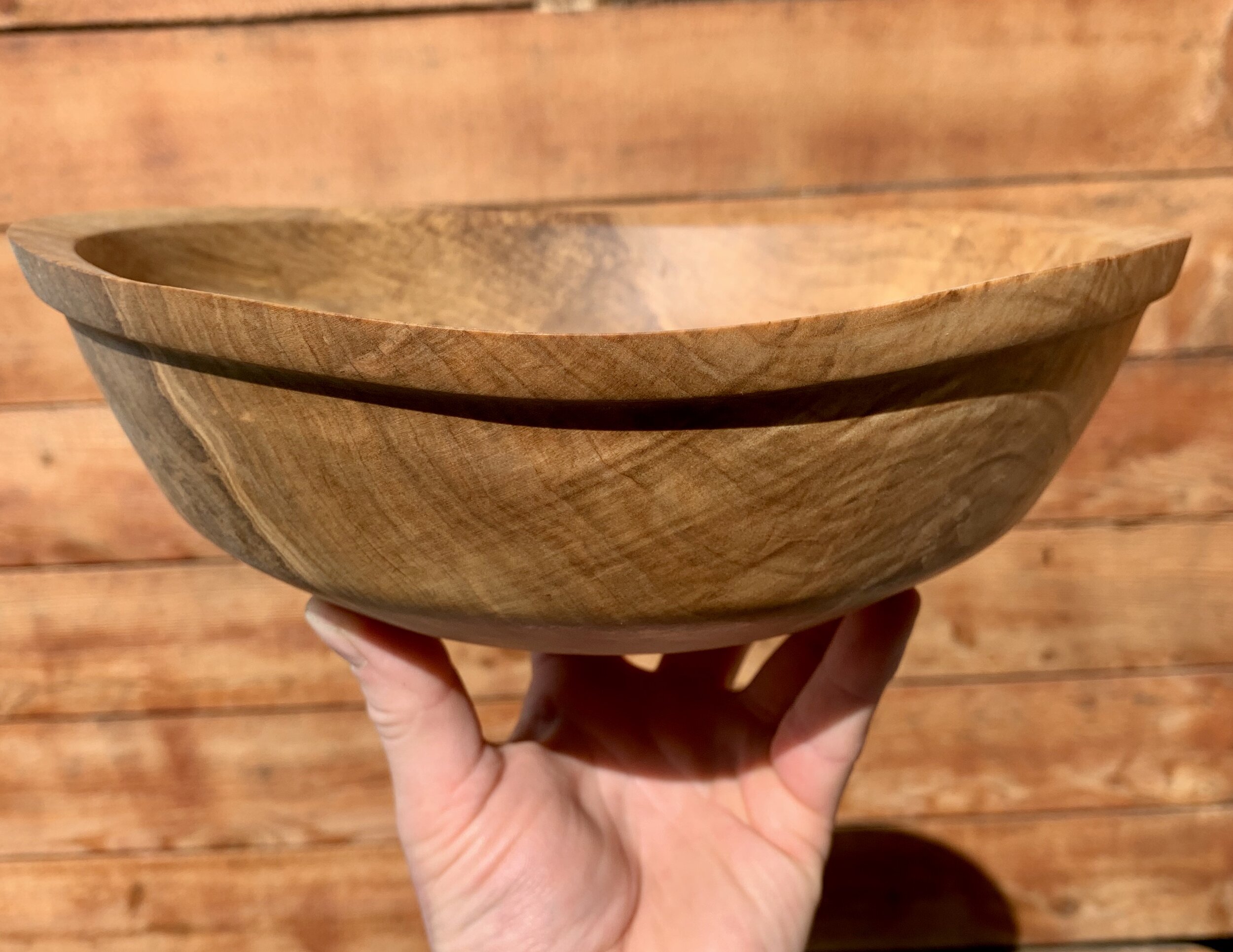Why my bowls are warped
Why are my bowls warped?
To put it simply, I like the character that it adds.
To gain a firm grasp we should go back to the beginning, back to where the bowl came from. Trees are full of water, and after they are cut down it takes time for that water to dissipate. A log left whole and lifted off of the ground can retain a high internal moisture content for years. In fact a rule of thumb used by woodworkers and sawyers is that it takes a year for every inch of thickness of lumber and slabs to dry to an acceptable relative moisture content. So a slab that is four inches thick should air dry at least four years before it’s used for anything that will be indoors. There are a lot of factors that can change these numbers and that can get kind of complicated so we won’t get into specifics right now, but this is a good general rule.
Left picture is a group of straws to represent the grain structure in wood.
Right picture is a close up of the open grain structure of a piece of oak.
The next thing to understand is how wood dries. Wood can be thought of as a group of straws that run from the base of the tree all the way up the trunk and out to all of the branches. These straws are how the tree brings water from the ground up to its branches and leaves.
Because of this design, moisture within logs travels more freely out of the ends of the log (known as end grain) then it does out of the sides of the log, or the face of lumber that has been made out of the log (known as face grain). So what ends up happening is that the outside of the board that is exposed to the air dries quicker than the inside of the board. Wood fibers shrink as they dry, so this uneven drying causes uneven shrinking and the uneven shrinking is one of the things that causes wood to crack and warp.
This is a wood moisture meter reading an acceptable moisture content in this piece of maple.
The other culprit for wood movement is internal stresses within the wood fibers. Sometimes as the tree grows it develops stress inside the wood fibers, this stress can sometimes present itself as the wood fibers are cut. I have had boards on the table saw that both seem to try and close up the cut your making and sometimes seem to try and split apart further as you’re making the cut. Ive also had bowls on the lathe that just don’t seem to want to stay round and seem to be constantly moving as your turning.
Wood stabilizes once it reaches stasis, which is usually when the relative moisture content in the wood drops below 8 or 10%. At this point as long as the wood isn’t subject to extreme swings in temperature or humidity there should only be small amounts of movement, most of which you probably can’t detect with your eye.
While lumber that warps and twists can add extra steps to a woodworkers building process and sometimes make the lumber unusable for a project, it can add a whole lot of character to a bowl. So when I make a bowl, I’m aiming for it to have some movement.
There is two schools of thought among bowl turners, once turned and twice turned, but both pretty much agree that starting with green wood is easier. A once turned bowl is turned from a green chunk of wood into a finished bowl that is the thickness and size that the turner wants, and is then set aside to dry. A twice turned bowl is turned from a green chunk of wood but is left thicker and larger than the turner wants the final shape to be, and is then set aside to dry. Both of these bowl are going to warp a bit as they dry, the only difference is that once dry the twice turned bowl will be put back on the lathe and turned again (see where the twice turned name comes from). This allows the turner to bring the bowl back to perfectly round, getting rid of all of the warp from the drying process, and since the wood has reached stasis there should be very little movement from this point on. The once turned bowl will simply be sanded and the bottom will be flattened so that the bowl doesn’t rock while sitting on a flat table. Both processes result in a beautiful piece and there are times when either method may be preferred.
In my world a little “imperfectness” makes a piece a little more unique and natural, so I tend to lean toward the once turned method and let Mother Nature have a little say over my finished product.
This Cherry salad bowl has a nice subtle warp that is apparent around the rim.
You can clearly see how much this hand carved dough bowl has warped during its drying. This dough bowl was carved to final thickness and dried in a kiln.




